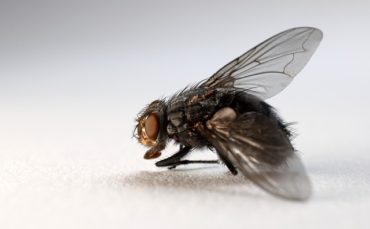

The housefly is something which has probably been burned into your memories as far back as you can remember. You probably remember one getting in the house and one of your parents going after it with a fly swatter or rolled up newspaper.
Have you ever put much thought into this insect? In case you haven’t but find yourself suddenly intrigued, we have created this article about the common housefly, its origins and methods to stop it from bothering you.
The common housefly (Musca domestica) has been with humankind for many thousands of years. It is thought to date all the way back to the days of our ancestors in middle to northern Africa. The insect has followed humans around the world and become somewhat of a permanent scavenger attached with our species. They are adapted to fly and move just a little faster than we do, making them hard to kill.
They hover around our living spaces waiting for some scraps of food or waste to be left out. They then use this source of energy to stay alive and reproduce. They can be stealthy when need be. So much so that ancient peoples thought that rotting food simply turned into fly larva. They weren’t able to recognize that flies laid their tiny microscopic eggs on it and did so very quickly.
As humans domesticated animals for our use, the housefly was also adapting to our habits and configuring the best way to take advantage of us. As humans built better and more stable homes, the housefly would become a frequent pest, often getting trapped inside of a dwelling hence spawning the name “housefly”.
As you probably have figured out that the best way to prevent this insect is to discard old food in tightly sealed trash bags. If there is nothing for it to eat then it won’t hang around. But houseflies are always on the move and may make their way into your house as part of a reconnaissance mission. Once inside, a young healthy housefly is hard to defeat. This is because tiny hairs on its body can sense movement around it. When you approach a housefly, it can literally feel you coming.
They also react and move very fast. They basically see your fastest movements in slow motion. This is why an implement like a fly swatter can increase your chances of eliminating the fly. The end of the swatter moves very fast and they cannot compensate for its speed. Also, the tiny holes in the swatter serve two functions: 1) to allow it to move as fast as possible without wind resistance. 2) to prevent air from compressing in front of the swatter while in motion and warning the fly by way of those little hairs mentioned earlier.
Make sure your doors and windows have screens which are in good working order. These are essential for keeping out the housefly.
Make sure you have a good reliable fly-swatter. They can be worth their weight in gold when dealing with a pesky and tenacious housefly.
